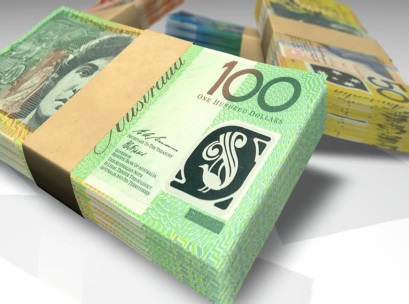 The Australian dollar has risen Thursday, buying 71.13 US cents from 71.07 US cents on Wednesday.
The Australian dollar has risen Thursday, buying 71.13 US cents from 71.07 US cents on Wednesday.
Yesterday, the local currency had rallied after domestic and Chinese economic data proved surprisingly strong, while another report circulated that the Sino-US trade dispute might be close to resolution.
The Aussie dollar hopped up 0.4 per cent to 70.99 US cents, after touching a three-week trough of 70.52 on Tuesday.
The bounce was timely for bulls as the currency had looked in danger of testing the 70 cent mark.
Helping sentiment was a report from the Financial Times that the United States and China were close to a trade deal, though still haggling over some sticking points.
That was followed by a Caixin/Markit survey showing activity in China’s services sector picked up to a 14-month high in March as demand improved at home and abroad.
Australian data also proved promising, with retail sales jumping 0.8 per cent in February when analysts had looked for just a 0.2 per cent rise.
It was the largest increase in 15 months and suggested household consumption was making something of a comeback after a poor end to last year.
Adding to the good news, Australia’s trade surplus climbed to a record high of $4.8 billion in February as a surge in iron ore exports offset a weather-driven drop in coal.
That brought the rolling 12-month surplus to almost $30 billion, with $9 billion in January and February alone.
That was a windfall for corporate profits, national income and the government’s tax take.
All of which would be a comfort for the Reserve Bank of Australia, which sounded some cautious notes on the economy after its monthly policy meeting on Tuesday.
In particular, analysts seized on a wording change in the last sentence of its policy statement to suggest the bank might be inching toward an easing bias on interest rates.
“The lift in retail sales was a very solid outcome that gives the RBA some reassurance that household spending could bounce back in the first quarter,” said Kaixin Owyong, a market economist at NAB.
“There may be some price impacts at play – food sales were unusually strong – but these data give the RBA room to remain on hold.”
The better numbers led to a slight lengthening on the odds of a rate cut anytime soon, though a quarter point move is still fully priced for August.
Access exclusive analysis, locked news and reports with Inside Retail Weekly. Subscribe today and get our premium print publication delivered to your door every week.






